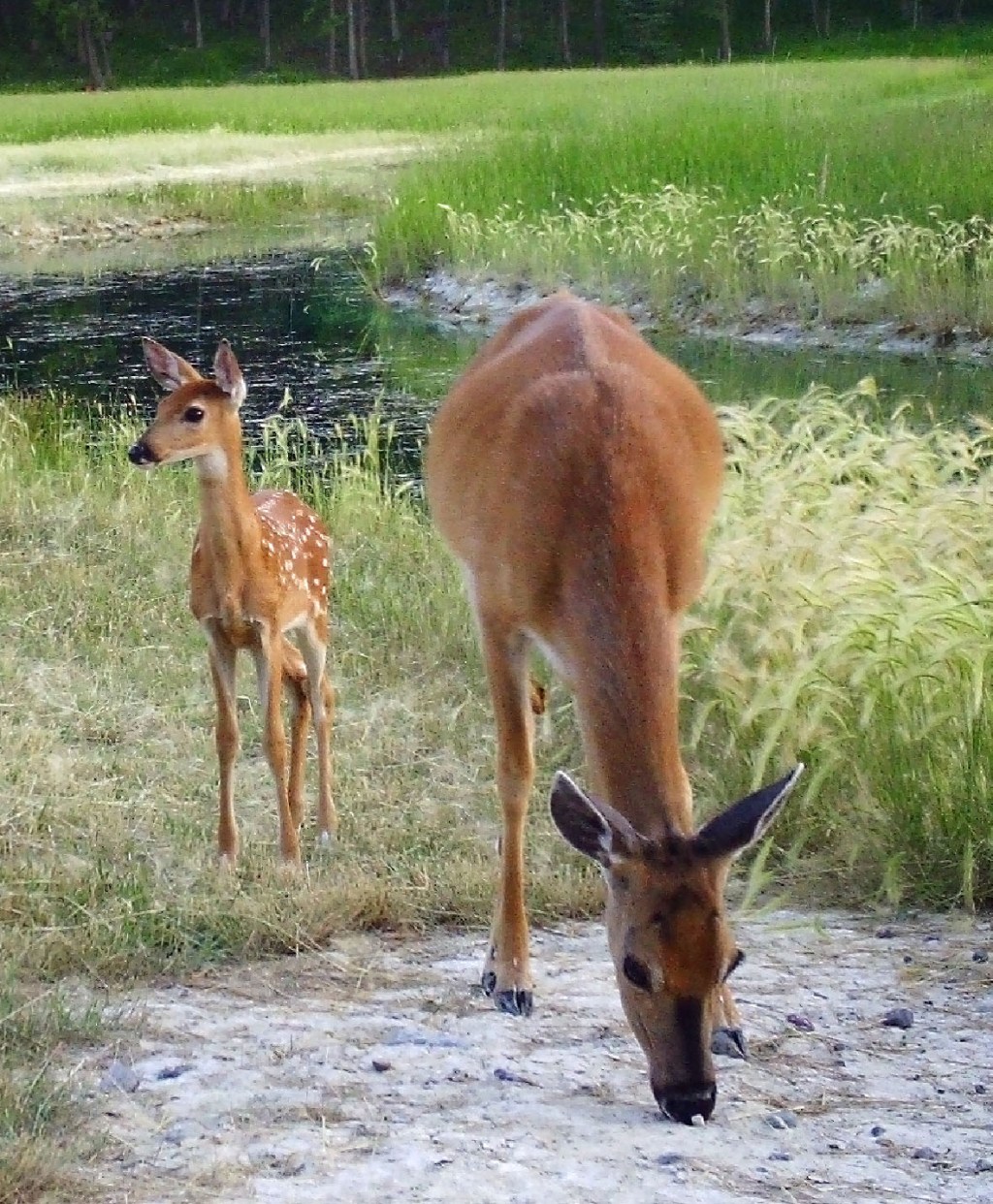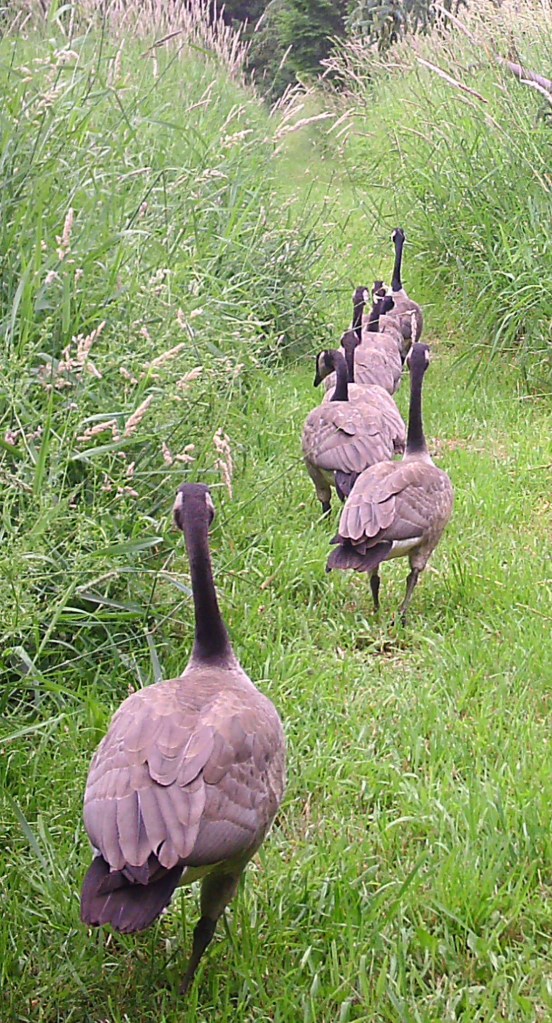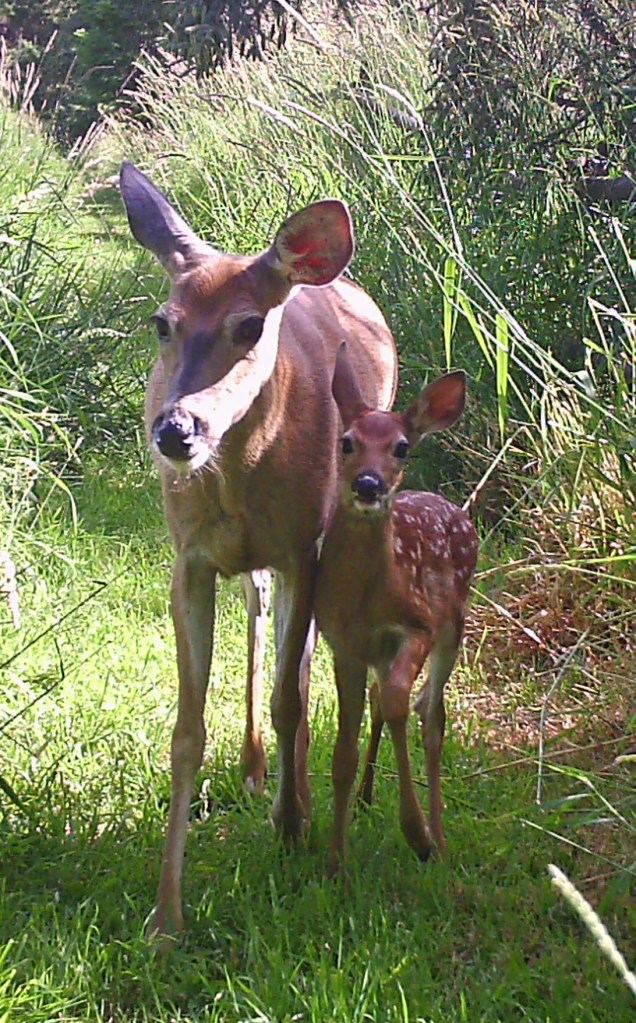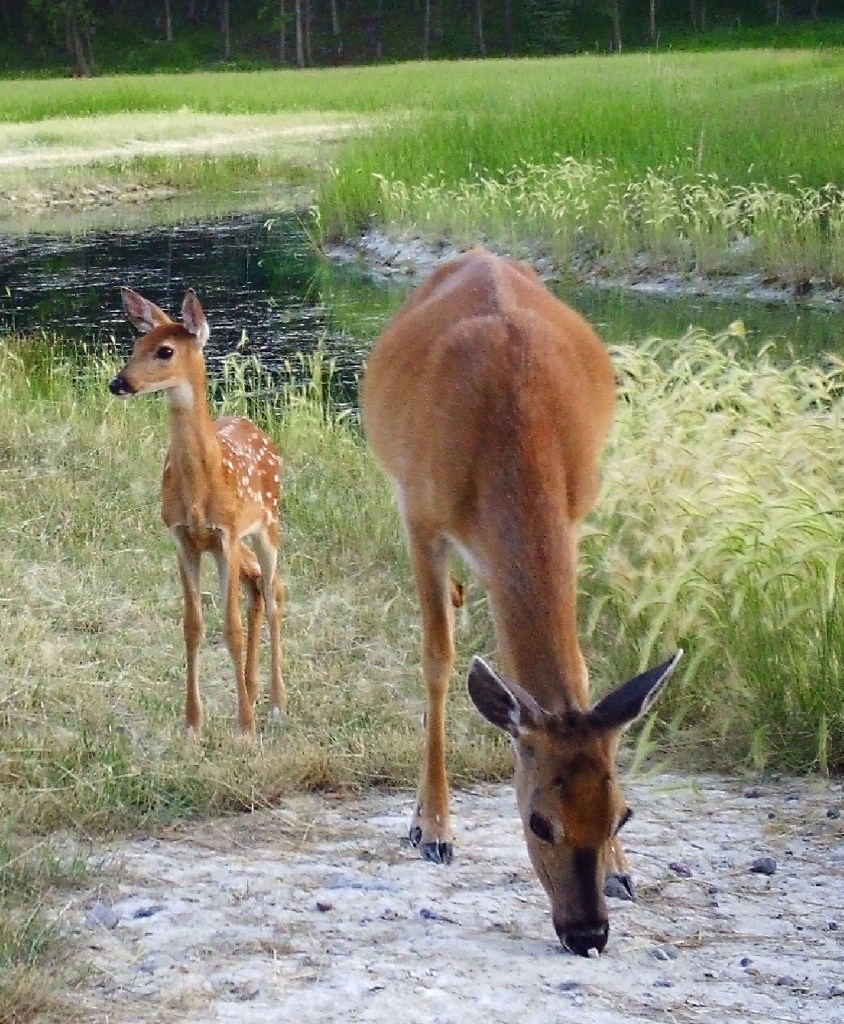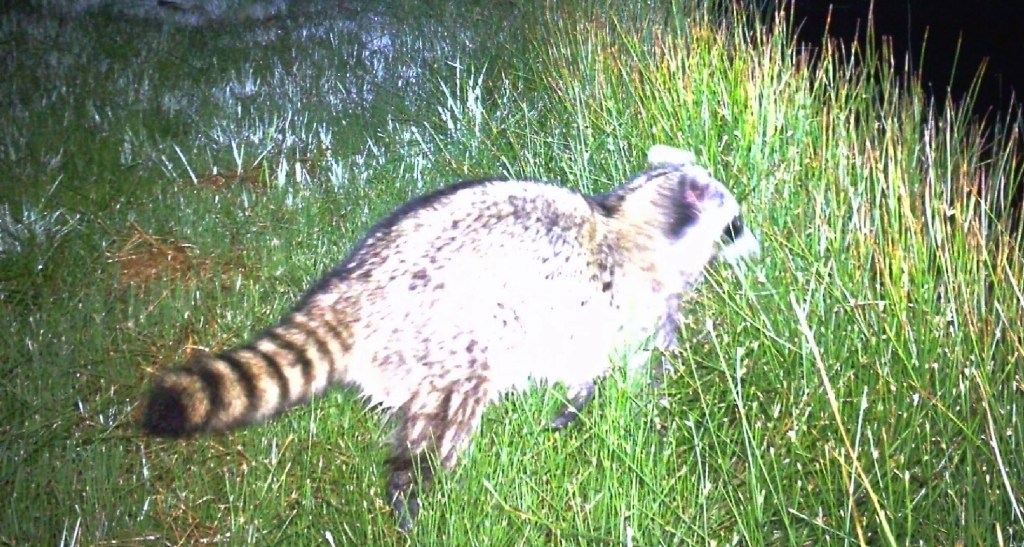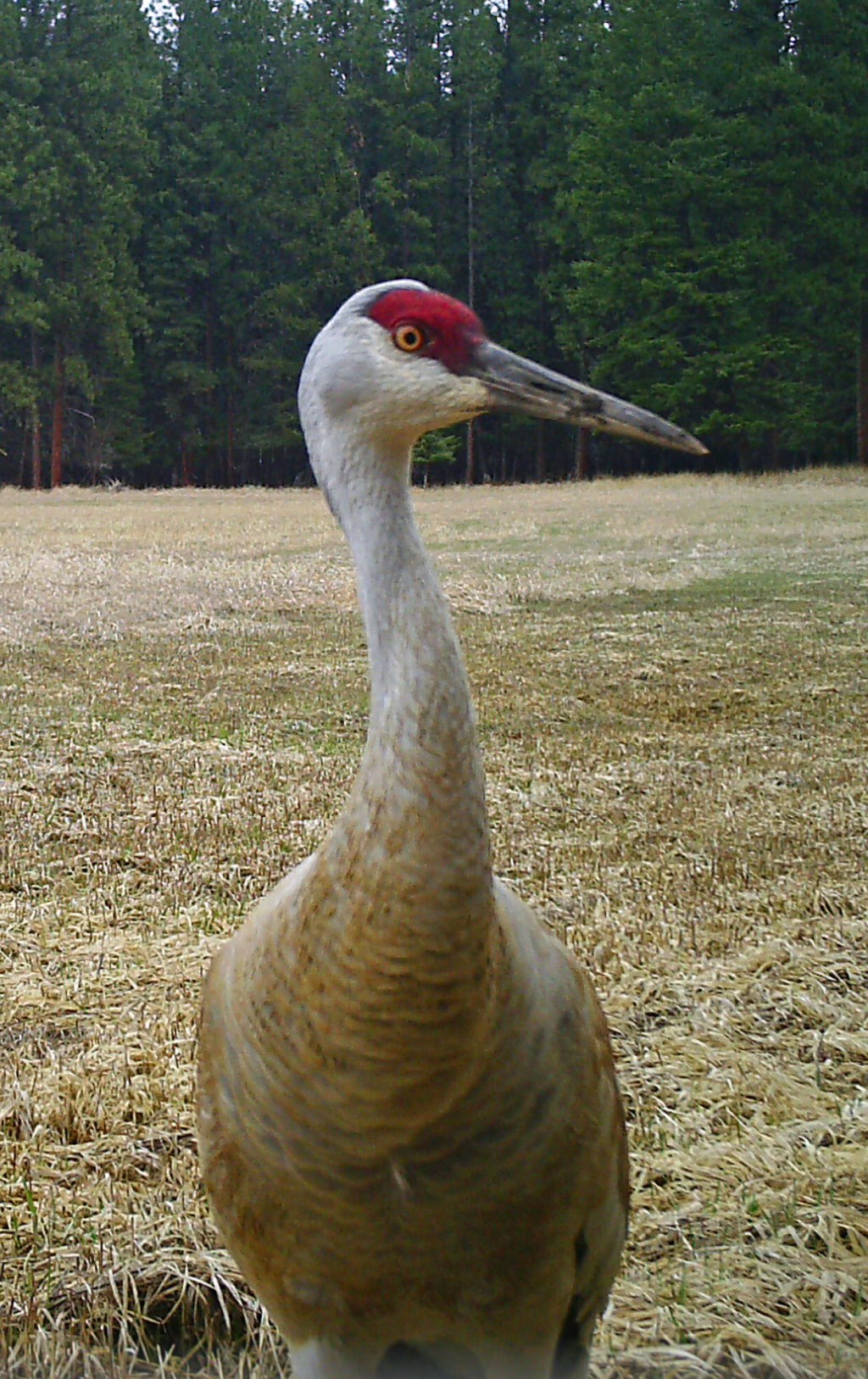This is my seventh year watching Gander raise goslings. The first six years, it was Goose and Gander, but she was frail last year, and didn’t make it back. This year, it was Gander and Sweet Young Thing . . . plus four of his older descendants and their mates.
In the past, Gander has made solid efforts at training his goslings in formation flying – starting with water landings from the dock before they could fly. Eventually, the formations tighten up – but this year is different. First he trained this year’s goslings, then one hatch at a time he has been incorporating the grand-goslings into the flight. It’s a small pond for 40 geese to land simultaneously. He started ground landings when I mowed the hay – and it looked like raking the hay just added another training complication for his flight school.
The youngest hatch are still on the pond – but I expect most of the geese will be gone by the end of the month, living on larger lakes, and then there will be the last landing and overnighter of fall, as the young geese make the final imprint that will lead them back to the pond next year. Most won’t return, but some will return with their mates to raise their own hatches – returning in pairs where they left flying formations.
There are seven little coots on the pond – they will probably make it . . . though the parental coots are about as far removed from Gander’s family responsibility as can be. This year has been good for coots. The Cinnamon Teal has four little birds following her.
The blue heron has perched on the top of a Ponderosa pine – and I think the heron is the source of the small perch I see in the canal. I think the perch in Rattlebone lay eggs in the grass along the shore, the scales on the heron legs attach a couple of fish eggs, they’re dropped in the pond . . . and most of the time the tiny perch becomes a snack for the little diving ducks. Someday, there will again be fish in the pond – life finds a way. When they do, the aeration will make their lives a little more secure in the winter. The pond really does have too much shallow water.
The multitude of geese increase the algae production – too much natural fertilization. Last Fall I noticed a goldfish – I don’t believe the birds helped it along. I figure someone decided the pond looked like a home for it – since I haven’t noticed any carp in the pond, I think that was an introduction that failed . . . or possibly a single large goldfish is working the algae. If so, that fish has its work cut out for it.
The last couple of years, the fluctuation between high and low water seems to be more than the resident muskrats could handle – but others will hike in and make the pond their own one day. Life finds a way. The crayfish are there – and I should probably set up some traps for the mini-lobsters.
I think I get to pay the taxes on the pond, and do the maintenance to keep it going – but the owners are the frogs, the birds, the missing muskrats, the barely established fish that might, or might not, make it.
The salamanders from the shoreline, the voles along the edge, swimming like their larger relatives the muskrats as they evade the small predators – the least weasels. The red winged blackbirds do their best to protect all nesting birds from eagles and ravens. The nighthawks have hatched and are learning to fly and catch insects on the wing.
Thoreau had Walden as a young man – my two acres of pond provide an old man a lot to watch.
